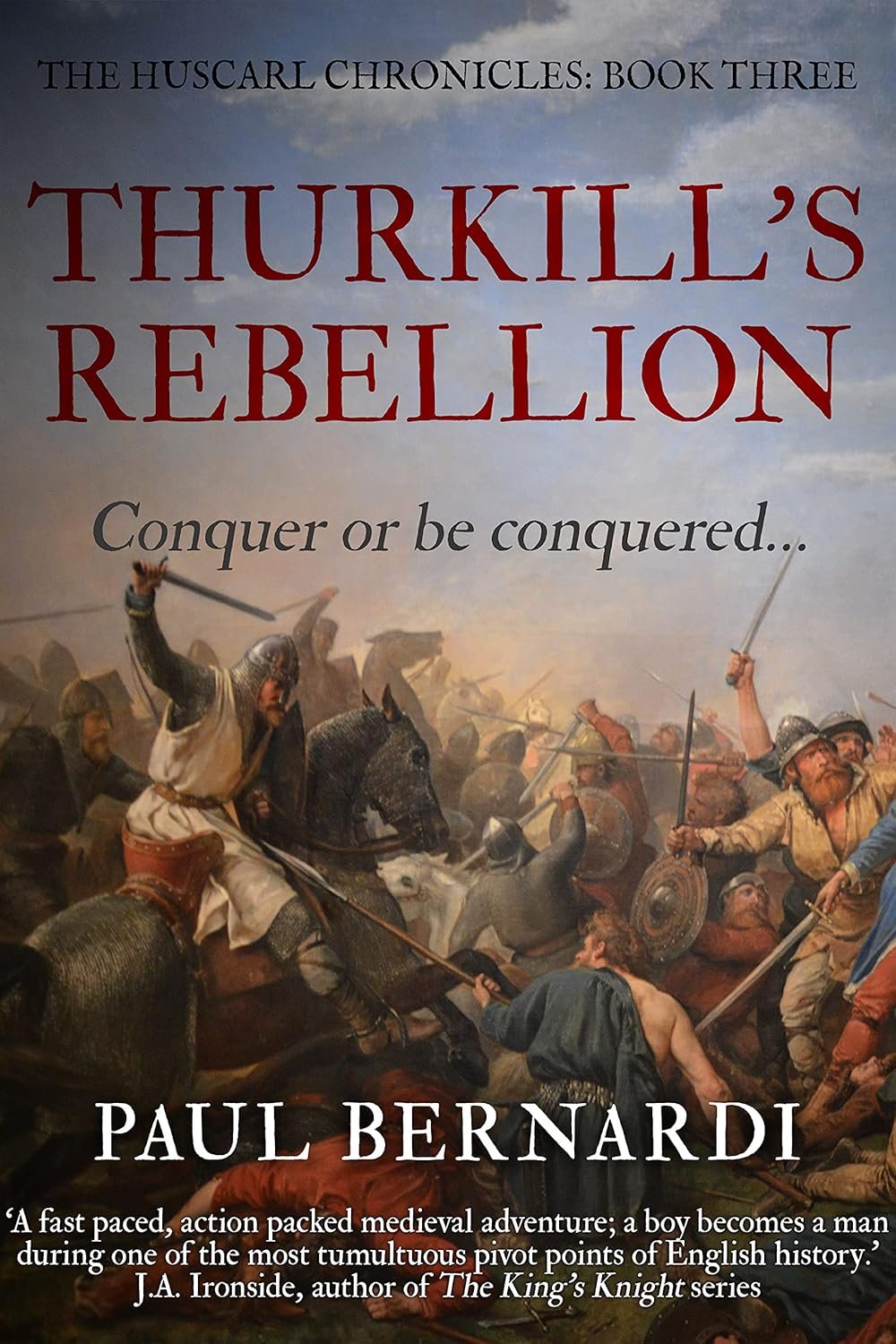Exploring History, Crafting Stories, Inspiring Writers
Paul Bernardi discusses his passion for history, the balance between accuracy and creativity, crafting relatable characters, future projects, and offers invaluable advice for aspiring writers of historical fiction.
Paul Bernardi stands as a shining beacon in the realm of historical fiction, a genre that demands both meticulous research and a flair for storytelling. With an enduring passion for history that took root during his school days and flourished at the University of Leeds, Paul has masterfully brought to life the tumultuous and transformative era of Anglo-Saxon and Norman England. His works are a testament to his dedication to historical accuracy, balanced with the creative freedom that makes his novels not just educational but utterly enthralling.
His debut trilogy, The Huscarl Chronicles, captivated readers with its vivid portrayal of the Norman Conquest through the eyes of Thurkill, a young warrior navigating the chaos of 1066. This series established Paul as a formidable voice in historical fiction, blending the grit of medieval life with the universal emotions of honour, loyalty, and survival. He followed this success with the Rebellion trilogy, beginning with Blood Feud, which delves into the seismic impact of Norman rule in the north of England. Not content to confine himself to one narrative style, Paul also penned Blood Price, a standalone murder mystery set during the reign of King Knut, showcasing his versatility and depth as a writer.
Published by Sharpe Books, Paul’s novels are a treasure trove for history enthusiasts and fiction lovers alike. His ability to craft complex, relatable characters like Thurkill and Oslac, combined with his knack for weaving compelling plots, has earned him a devoted readership. Whether it’s the painstaking detail of medieval life or the sweeping drama of historical events, Paul’s works transport readers to a bygone era with unparalleled authenticity.
In this issue of Reader’s House, we are thrilled to present an exclusive interview with Paul Bernardi. Join us as he shares insights into his creative process, his approach to balancing historical accuracy with storytelling, and his plans for future works. For aspiring writers of historical fiction, his advice is as invaluable as his novels are inspiring. Paul Bernardi is not just an author; he is a custodian of history, breathing life into the past with every page he writes.
“Paul Bernardi masterfully blends historical accuracy with compelling storytelling, creating unforgettable characters and transporting readers to medieval England.”
What inspired you to write about the Anglo-Saxon and Norman periods in your novels?
History was always my favourite subject at school – right from the time we were set a project on Roman Britain in Year 7 (or 1st year secondary school in old money!) which needed me to do a load of research before writing it up. It was probably only about 1000 words or so, but I was hooked from then on.
After school, I went on to study history at the University of Leeds where I focussed on the Anglo-Saxon era. For some people it can be a frustrating period because of the paucity of primary sources (it’s not – unfairly – called the Dark Ages for nothing), but that is a major part of its appeal to me. Especially when it comes to writing historical fiction; there’s so much space for your imagination to fill.
How do you balance historical accuracy with creative storytelling in your books?
Those that know me would say that I am a stickler for accuracy (not just in historical stuff – though I have learned not to be the guy who says “Well, that type of armour wouldn’t have existed then” and such like, every five minutes when watching TV dramas).
That said, I look at this issue in two ways when writing. For me, it’s really important to have the detail right. This is the stuff that helps transport the reader to the time and place, but it’s also where careless mistakes can just as easily jolt them out of the story. In my very first novel (set during the second world war), I mentioned the driver of a car turning to put his seatbelt on. Someone kindly pointed out that the model of car I was using did not have seatbelts at that time. Clang! Lesson learned.
But then, at the macro-level, I think you can be a lot more flexible. Generally, people do not read novels for a history lesson, so they will be less bothered if you play a bit fast and loose with the facts, characters or timeline so long as it makes for a thrilling ride.
Confession time: one of the most annoying reviews I ever had related to Blood Price (my standalone murder mystery novel set during the reign of King Knut). I had included a chapter that used falconry as its spine and someone gave me a 1 star review, saying that falconry was a Norman introduction. It took a huge amount of restraint not to respond, showing the research I’d done which showed that the elite Anglo-Saxon classes also enjoyed hunting with hawks from the tenth century onwards.
How do you approach creating complex characters like Thurkill and Oslac?
Painstakingly. My overall aim is for them to be ‘normal’ people with the same basic emotions, hopes, fears, and feelings as us. It’s something which I feel helps readers to form an attachment with them. So Thurkill – a teenaged warrior – is a highly principled youth that sets great store by honour and respect; traits he has learned from his father. That said, he’s also a cheeky sod at times, and always just a heartbeat away from a clip round the ear from his aunt.
As an illustration of my intent, I was particularly gratified to see a recent review for Blood Feud in which the reader said he was particularly pleased that Oslac was “not one step removed from Superman but a fairly ordinary bloke fighting for his family and beliefs.” Keeping it real.
Are you planning to explore other historical periods in future works?
Definitely. I’m close to finishing book two in my current “Rebellion” trilogy (covering the impact of the Norman Conquest on the north of England), and hope to have the final book out before the end of 2025. Then… who knows?
Although my real love is the Anglo-Saxon period, I am currently reading Helen Castor’s book: The Eagle and the Hart about the cousins, Richard II and Henry IV. It has the feel of rich seam just waiting to be mined.
What advice would you give to aspiring writers of historical fiction?
There’s so many things, but if I were to boil it down to two or three…
Firstly and most importantly, whether you’re a planner or a (seat of the) pantser, at some point you have to put (virtual) pen to paper. When you do, don’t look back. Don’t worry if you think it’s rubbish; I’m sure a lot of established authors think that still. The key thing is that you finish. If you keep rewriting each paragraph, you’ll never complete your first draft. And that is a HUGE milestone for every author. You can always edit later.
Secondly – and one that I found particularly hard – your novel is not a chance for you to display your hard-won historical knowledge. Your novel exists to entertain the reader. You have to resist the temptation to descibe every intricate step of the process by which swords were made in eleventh century England. No one – but you – cares.
Finally, keep the story moving. Ideally you should start with something significant and action-packed to hook the reader from the beginning. Something that makes them want to invest their time and find out how things work out for your characters. From there, keep the pace fast and the action flowing.
EDITOR’S CHOICE
A gripping, action-packed historical adventure with rich detail, compelling characters, and intense battle scenes. A must-read for medieval fiction fans!



